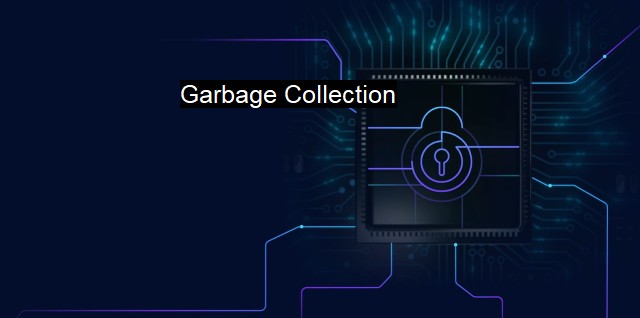What is Garbage Collection?
Garbage Collection and Cybersecurity: Protecting Computer Systems with Antivirus Software and More
Garbage Collection (GC), particularly in the context of cybersecurity and antivirus software, is an effective approach to handling unwanted or outdated data from systems. this utility is an automatic memory management feature executed by many modern programming languages that identifies and removes redundant and unused data, hence the metaphorical term ‘Garbage Collection.’Cyber security is based on the segregation, categorization, and protection of systems or shared network data from external threats, intruders, and unauthorized access. Both antivirus software and Garbage Collection tools play substantial roles in preventing system breaches, maintaining system resources, and efficiently managing data assets.
A system with robust cybersecurity must continuously track and dispose of unneeded and irrelevant data. This function simplifies the management of system resources, enhances speed and efficiency, and minimally affects system performance. Without adequate GC, a system can become overloaded and slow down due to unused objects occupying memory resources, even potentially leading to a total system crash.
For manual memory management, programmers have to specify which objects or resources to de-allocate when no longer needed, but the lack of proper tools or methodologies to track each object's ‘usefulness’ can cause complications, leaks, and crashes. To avoid such difficulties, many programming languages come with built-in garbage collection capabilities to dispose of unused objects automatically. In other words, GC automates memory reclamation, thus freeing up resources tied to unused or ‘stale’ objects.
GC isn’t simply about freeing up memory or reclaiming unused fragments. GC plays a broader role. It scrutinizes every aspect of the system – from residue data to inactive cache files and particularly malware traces employed by cyber attackers to harm the system. This automatic and continuous cleaning process helps maintain secure computing environments and hardens the system against cyber threats.
Through effective GC mechanisms, antivirus software can strengthen the system’s defense significantly. Antivirus software regularly scans systems for known and emerging threats, blocking viruses and malware from entering the system in the first place. Any observed suspicious data is marked and subjected to detailed examination. If identified as a potential threat, these elements are isolated and removed. Hence, the antivirus software systematically leverages GC to strip the system bare of threats.
Trustworthy and practical cybersecurity requires authenticated and encrypted data streams wrapped with reliable antivirus walls. These security standards are vital to remaining safe in the growing field of cyber threats. the tools, techniques, and methods are continually evolving, and garbage collection is no exception as it becomes capable of tackling advanced system breaches.
Enhancement in garbage collection methodologies has seemingly paralleled the development of more sophisticated malware. GC algorithms are continually improving to target and remove complex and deceptive malware threats camouflaged as useful data forms. The very design of GC is one that tries to reconcile efficient memory use, protection against memory leaks, and secure data blocks, thus intertwining the effectiveness of cyber safety measures, antivirus intrusion detection, and intrusion prevention.
Garbage collection, largely recognized for its efficiency in managing system resources and as a key component of better system performance, proves itself to be equally crucial to cybersecurity and antivirus protection. By automatically tracking and eliminating threats, the GC mechanism improves system security, boosts overall performance, reduces the likelihood of intrusion, and maintains system health despite ever-evolving cyber threats. Given its capabilities, GC should be seen as more than just an automatic memory management tool - it is a vital component in the cybersecurity landscape.

Garbage Collection FAQs
What is garbage collection in the context of cybersecurity and antivirus?
Garbage collection is a process used by antivirus software to free up memory by removing unwanted and unnecessary data. This helps to ensure that the system runs smoothly and efficiently, reducing the risk of security breaches and other issues.How does garbage collection work in antivirus software?
Garbage collection in antivirus software typically involves scanning the system for unused or unnecessary data, such as temporary files, old backups, and unused program components. The software then deletes these items to free up space and improve system performance.Why is garbage collection important for cybersecurity and antivirus?
Garbage collection is important for cybersecurity and antivirus because it helps to prevent security breaches and other issues. By removing unnecessary data from the system, the software can reduce the risk of viruses, malware, and other cyber threats. Additionally, garbage collection helps to improve system performance by freeing up memory and reducing the load on the processor.Are there any risks associated with garbage collection in antivirus software?
Although garbage collection is generally a safe and reliable process, there are some risks associated with it. In some cases, the software may mistakenly delete important files or data, causing system errors or other issues. Additionally, if the garbage collection is not performed correctly, it could leave behind data that could be used by cybercriminals to gain access to the system. To minimize these risks, it's important to use reliable and trustworthy antivirus software and to regularly back up important data.| | A | | | B | | | C | | | D | | | E | | | F | | | G | | | H | | | I | | | J | | | K | | | L | | | M | |
| | N | | | O | | | P | | | Q | | | R | | | S | | | T | | | U | | | V | | | W | | | X | | | Y | | | Z | |
| | 1 | | | 2 | | | 3 | | | 4 | | | 7 | | | 8 | | |||||||